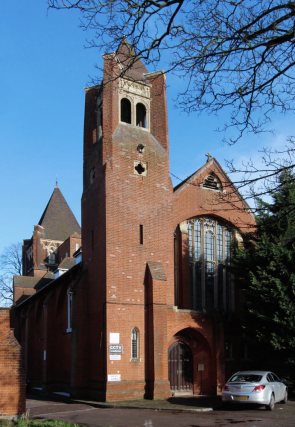Bury Street
Bury Street, Enfield
A former hamlet in Lower Edmonton centred on the thoroughfare of that name, which was split in two by the creation of the Great Cambridge Road in the 1920s

From the mid-17th century Bury Street was one of the four constituent wards of Edmonton. The ward took in an extensive area; its main settlement was Winchmore Hill.
Bury Hall was a grand Jacobean house, enlarged in 1750, and possessed by just three families during its three-century existence. Its last private owner was William Bowater, the paper-maker.
When Bury Hall was auctioned by Harrods in 1914 the particulars of sale stated that its cellar “covers a larger area than the house, and is believed to have been connected with a subterranean passage that linked up the old houses in Bury Street, and connected with the Church.” Despite this boast the property did not meet its £5,500 reserve price. The hall was demolished to make way for the Great Cambridge Road.
Houses began to line Bury Street from the end of the 19th century, but much of the vicinity remained covered by nurseries until its interwar development.
The street now crosses the railway via a bridge, which replaced a level crossing and its keeper’s cottage. Bury Street West and Little Bury Street, which crosses Salmon’s Brook, retained some delightful 18th-century cottages until they were knocked down in the 1930s.
Shown in the photograph above,* the church of St Michael Bassishaw was built in 1901 by William Caröe, with a foundation stone by Eric Gill. The construction of the church was funded with part of the proceeds from the sale of land in the City of London on which its namesake had stood. Bury Street’s St Michael Bassishaw was made redundant in 1982 and sensitively converted into flats.
Walmer House, a twelve-storey block of 44 council flats, was built in the late 1960s. Many of the flats are now privately owned.

Perhaps the locality’s finest surviving building is the grade II* listed Salisbury House, on Bury Street West. Built in the early 17th century, the house became Enfield’s first arts centre in 1957 and was sensitively restored by the council in 1992. Today it hosts community art classes and a variety of events and activities. The rooms and grounds are available to hire.
Salisbury House is also home to the business and community platform Love Your Doorstep and the community arts organisation Art Start. There’s a café coming soon too. Marked with a big pink pin on the map below, the house adjoins Bury Lodge Gardens.
